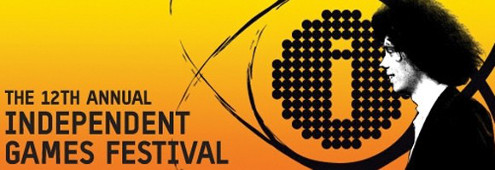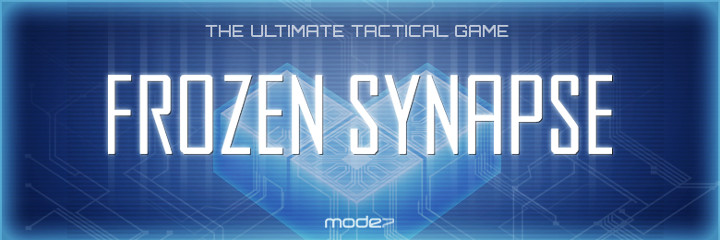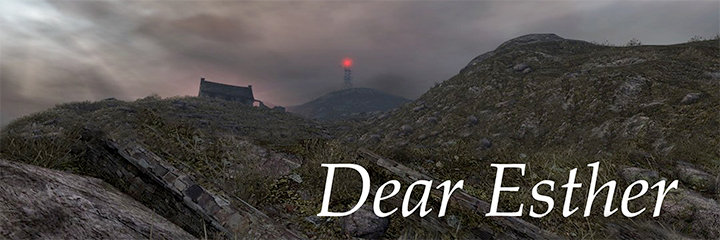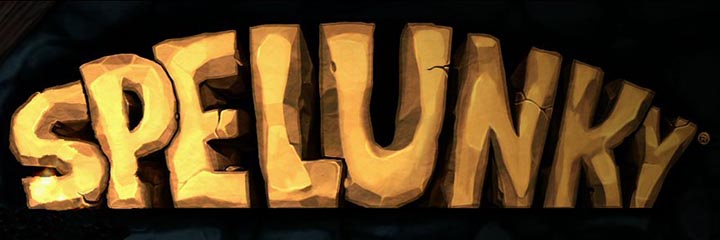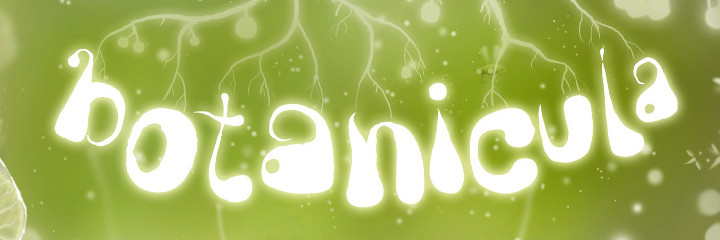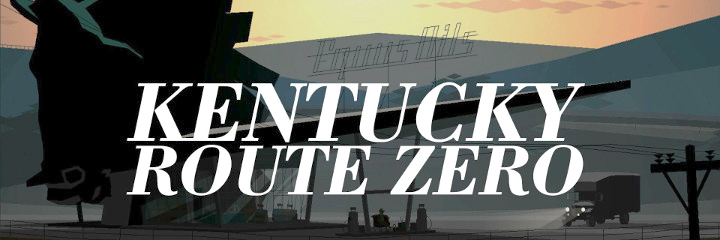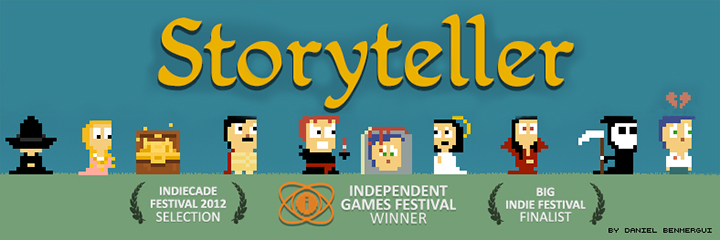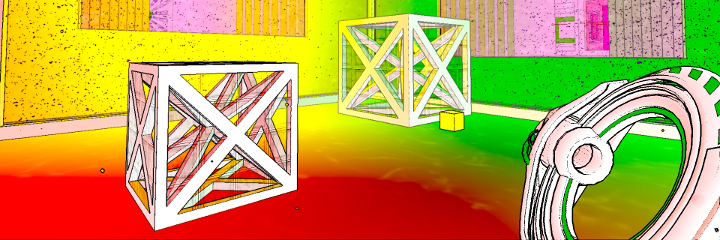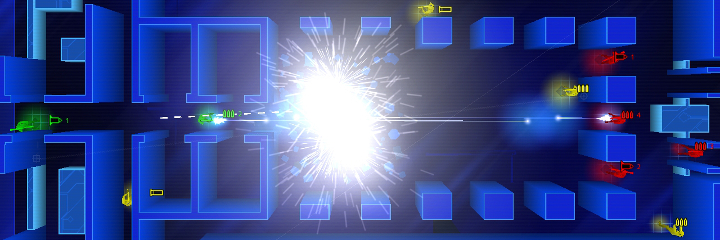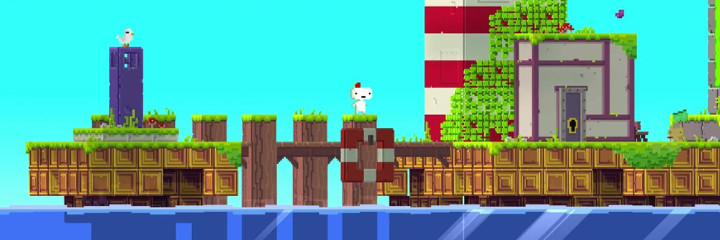Who Wins the IGF?
Independent Games Festival (IGF) winners come in all shapes, sizes, and genres. But what sets the handful of winners apart from the hundreds of entries the contest receives each year? Is there anything that developers can do to distinguish themselves from the crowd? In this article we’ll look at how IGF winners over the last two years did it.
[toc]
g

Our Findings
This article is damned long, so here’s a summary of our findings. We found that IGF winners were characterized, with very few outliers, by:
- Some type of prior “notoriety”, which might come from the developer’s previous games, a pre-existing version of the game itself, a large or growing fan base, or other factors discussed below.
- Development times averaging out at over two years.
- Having at least two people involved in the development process.
- Being more than just “feature complete” (one of the requirements for an IGF submission). By the time IGF winners are announced in March, the majority of them are highly polished, and are often already commercially releasable games.
- A widely varying amount of information available in developer blogs. Winning developers differed greatly in their posting frequency and blog content, although most of the winners made sure to at least announce, “I’m making this thing!”
- Awesome trailers.
- Diverse geographic location, if “diverse” includes only Europe and former British colonies.
- Many different game engines, some commercial and some custom-built.
- Varying amounts of press, ranging from zero to boatloads.
These findings aren’t necessarily guidelines for developers to follow. They’re just a few of the things to consider when you wonder how your game stacks up against the competition.
Why Examine Past IGF Winners?
Our studio, Cipher Prime, would love to snag an IGF nomination, or, Cthulhu-willing, an IGF win. There are few indie developers who wouldn’t. Getting eyes on your work is the end-all, be-all of any small studio, and IGF finalists get press exposure, critical acclaim, the validation of their peers, ponies, and also more press exposure, in case I hadn’t mentioned that.
So when I was unwillingly shanghaied from my happy programming place and forced to research and write this article for us, I was trying to answer some questions our studio had about the winners. We were looking for examples that we could emulate, and that might clue us in to what we can do better. What were winners’ development cycles like? How were their release schedules structured? How much did they discuss their game before and during the IGF process? How much press were they getting?
Intrinsic and Extrinsic Factors in
Game Development
—————————————————–
A lot of those questions involve things that I consider to be “extrinsic” to game development, as opposed to intrinsic factors, which include things like the genre, design, content, and player experience of the games themselves.

In this article, we don’t care about those intrinsic factors, because even a cursory glance at the IGF finalists shows you how different the games can be. Each winner is its own brand of unique, and it’s probably unproductive to try and emulate any one of them. Given that the judges rotate every year, and that variety is the spice of life, you’re much better off forging your own path and bringing your own idiosyncratic vision to fruition.
But extrinsic factors are a different story. They cover the external, less sexy considerations of game development, like how long a game’s development cycle is, or how often one should reach out to the public and the press.
The rest of this article examines what sorts of prior notoriety IGF winners have achieved, how long their development process took, how they structured their release schedules, how much public outreach they did, and a few other extrinsic factors, like which game engine was used and where the game was developed.
How notorious are the IGF winners?
IGF entries exist on a spectrum of notoriety, a word I’m using as a catch-all term for the popularity, recognition, acclaim, and/or general ballyhoo surrounding a game and its developers.

When you look at IGF entries, at one extreme you have the projects submitted by hobbyists who have never shown their game to anyone before entering the contest, and who don’t talk about the game during the contest or afterward. At the other extreme, you’ve got world-class developers who’ve made their mark on the indie scene and have visibly worked on their project for years.
The vast majority of IGF winners over the past two years fall toward the latter end of the spectrum.
However, those winning projects have achieved their notoriety in many quite different ways. Some of them rest on the strength of their developers’ previous games. Some games were swept up in an organic wave of word-of-mouth fandom. Other games already existed in different versions and were lauded in other contests for their technical or aesthetic achievements.
This next section discusses a number of the different “paths” to notoriety, and some of the recent IGF winners that exemplify them.
Compulsive Contest Winners
Many IGF-winning games are already on the industry’s radar, having proven themselves incapable of blending in with the crowd. They’ve won other contests and may even have been nominated (or won!) in previous IGFs. Antichamber and Fez are two great examples.
Antichamber (2012 Technical Excellence Winner) has a long and meandering production story. The project grew out of game ideas Alexander Bruce had been throwing around since as early as 2006. Initially titled Hazard: The Journey Of Life, it was first shown off at the Tokyo Game Show’s Sense of Wonder Night in 2009, when it was an Unreal Tournament 3 mod. Bruce started developing a standalone later that year, which would be acclaimed in Make Something Unreal, selected for the PAX10 and IndieCade, and even nominated for the Nuovo Award in the 2011 IGF. After that year, the game was substantially reworked and renamed as Antichamber, and subsequently won the Technical Excellence award in 2012.
Fez (2012 Seumas McNally Grand Prize Winner) was nominated in the Seumas McNally Grand Prize and Technical Excellence categories. Polytron first announced the development of Fez in July 2007, on the TIGForums. The original thread is still open, and is currently on its 162nd page, with over 320k views. The game won the 2008 IGF for Excellence in Visual Art Award, though its development then stalled for years for various reasons, many of them chronicled by Indie Game: The Movie. But in 2011, the game was selected as one of the PAX10 at PAX Prime 2011, and won the Story/World Design and Grand Jury awards at IndieCade. It was finally released on XBLA a month after winning the Seumas McNally Grand Prize in 2012.
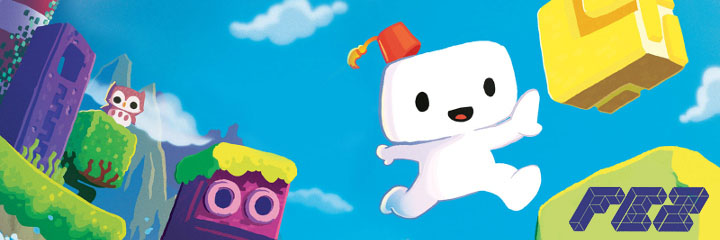
Blockbuster Commercial Successes
Other IGF-winning games had already achieved substantial commercial success before being submitted to the IGF; that success generally correlates with a well-deserved fan base for their games. These games usually snagged the Audience Award in addition to nominations in other categories. FTL: Faster Than Light and Frozen Synapse are representative examples.
FTL: Faster Than Light (2013 Excellence in Design Winner and 2013 Audience Award Winner) was nominated for the Seumas McNally Grand Prize and Excellence in Design. FTL has a well-documented and exciting history, including a 2011 IGF China nomination, a groundswell of Kickstarter support (a $10k Kickstarter that blew up to a $200k finish), a successful commercial launch on Steam, GOG, and their own website in September 2012, and a host of 2012 Game of the Year placements and mentions. The game was a rock star well before its IGF nominations and win.
Frozen Synapse (2012 Audience Award Winner), was nominated in two categories: Excellence in Design and the Seumas McNally Grand Prize. It spent four years in development, but benefited from a very active beta scene and a great deal of commercial success even before the IGF awards. The pre-order beta started in April 2010, and brought in $135k for its developers, Mode 7. It was followed a year later by the Steam release on May 26, 2011, and in September of that year, the Humble Frozen Synapse Bundle was released, which brought in $1.1 million in revenue.
Second-Generation Makeovers
Some IGF winners, like Dear Esther and Spelunky, were actually overhauls or mods of pre-existing games. The original versions of those games were often already critically acclaimed, and after rising from the ashes of their visual and technical revamps, or their platform ports, were found twice as stunning.
Dear Esther (2012 Excellence in Visual Arts Winner) was a finalist in four 2012 categories: the Seumas McNally Grand Prize, Excellence in Visual Art, Excellence in Audio, and the Nuovo Award. It was originally a Source engine mod created while its developer, thechineseroom, was a research group at the University of Portsmouth. It was released in 2008, and won critical praise and awards, including Best World/Story at Indiecade 2009. That same year the team also began revamping the game with new technology, after receiving a full Source license from Valve. In 2011, thechineseroom started their fully independent studio with Indie Fund backing, and pushed up their release date after switching Dear Esther over to the Portal 2 Engine. Dear Esther released on Steam on February 14, 2012, and won the IGF Excellence in Visual Art award a month later.
Spelunky (2012 Excellence in Design Winner), was a finalist in three 2012 categories: Technical Excellence, Excellence in Design, and the Seumas McNally Grand Prize. Derek Yu originally made the game in Gamemaker, and released it as freeware in 2008, on the TIGSource forums. In December 2009, the source to Spelunky was released, and a healthy mod community grew up around the game. Earlier that year, Jonathon Blow also contacted Derek Yu about doing a commercial version for XBLA release, and put him in touch with Microsoft. That kicked off a two-year development cycle culminating in a July 2012 launch.
Games with Well-Known Developers
IGF winners with good developer genes are those games that spring from the heads of established indie studios with distinctive reputations, like Amanita Design or Simogo Games. Or if they’re from new studios, they’re studios whose founders have well-known development chops, like the Tomorrow Corporation.
Botanicula (2012 Audio Winner) was produced by Amanita Design, the Czech Republic’s indie pride, which already had half-a-dozen titles under its belt, including the multi-award winning Machinarium (which also won the 2009 IGF Excellence in Visual Art award). Prior to its two 2012 IGF nominations (for Audio and Art), Botanicula was already getting press, including a Rock, Paper, Shotgun preview. And two weeks after receiving the IGF win, the game was already set to release in a Humble Bundle (the Humble Botanicula Debut), which ended up pushing $800k in revenue.
Beat Sneak Bandit (2012 Mobile Winner), is the third game from Simogo Games, a Swedish iOS studio. The studio is best known for the stand out art styles of its first two games, Kosmo Spin and Bumpy Road, which set them apart from 99% of the noise available on the App Store. Thanks to this, even before its IGF nomination, Beat Sneak Bandit had an IGN exclusive, as well as later previews in mobile news sites like Touch Arcade and PocketGamer.
Little Inferno (2013 Technical Excellence winner), despite being the Tomorrow Corporation’s freshman work, is in a similar position because of its creators’ arrival in the industry via World of Goo and Henry Hatsworth. The developers were getting indie press well before the game’s release, and their Nintendo connections helped Little Inferno become one of the Wii U’s 29 launch titles on November 18, 2012, which in turn resulted in a vicious press cycle irreparably increasing the game’s popularity and reach.
Word-of-Mouth Darlings
Organically fertilized press games don’t have much of the above-mentioned flair, but pick up a good deal of press and word-of-mouth due to their own strengths. For instance, Cart Life just tickled (though tickling may not be a bleak enough word) the indie world the right way, and Kentucky Route Zero had a jaw-dropping trailer.
Cart Life (2013 Seumas McNally Grand Prize Winner, 2013 Nuovo Winner, 2013 Excellence in Narrative) won every category that it was nominated in. The game was built in Adventure Game Studio, and released for free in May 2011. It was virtually unknown for many months afterward, except for a mention here or there. But in January 2011, Electron Dance lavished much praise on the game, and Rock, Paper, Shotgun and Kotaku covered it soon after. If you look at the Google Trends data for “cart life” searches, you’ll see that although the number of searches dipped after early 2012, they increased again once Cart Life was submitted to the IGF, even before it was announced as a finalist in January 2013.
Kentucky Route Zero (2013 Excellence in Visual Art Winner) was nominated in four categories at the 2013 IGF: the Seumas McNally Grand Prize, Excellence in Visual Art, Excellence in Audio, and Excellence in Narrative. Cardboard Computer’s game also hadn’t gotten a lot of press in its two-and-a-half year development time. Its Kickstarter (early 2011) was modestly successful, but didn’t generate much buzz. However, in October 2012 the studio released a new trailer for their IGF entry, showing off eighteen months of new and vastly improved design and artistic direction. Their work was amply rewarded by articles in Rock, Paper, Shotgun, Kotaku, Eurogamer, and other press outlets. There was an even bigger press explosion after their January nomination.
How long does it take to make an IGF winner?
Andy Schatz’s Monaco took home two IGF awards in 2010 (the Seumas McNally Grand Prize and Excellence in Design). At GDC 2011 he gave a post-mortem of Monaco’s development (here’s the link–it’s well worth a watch), describing how he went from conception to IGF winner in fifteen weeks.
However, Monaco’s lightning-fast turnaround seems to be an exception.
In the past two years, only Beat Sneak Bandit and Storyteller clocked in at less than one year of development before winning the IGF. Beat Sneak Bandit actually released commercially after six or seven months of development, and Storyteller won the Nuovo award while it was still in alpha, though Dan Benmergui had been working on it for about a year. FTL’s development time was one-and-a-half years, which included its Kickstarter and IGF China nomination a year prior to the 2012 win.
But most IGF winners pour at least two years into their games before they manage to snag an award. The Botanicula, Kentucky Route Zero, and Little Inferno developers all took approximately two-and-a-half years to finish their games. 140, which is still in development, was a personal project with two years of development behind it when it won the award for Audio excellence. Richard Hofmeier, the creator of Cart Life, joked that his projected thirty-day jaunt turned into a three-year odyssey.
A few winners took two or more years to develop the version of the game that won the IGF, but these winning versions were based on original games or mods that had already taken some time to development. Dear Esther and Antichamber were both mods that took between one and two years to create and were released on their own before their subsequent recreation (each totaling four and four plus years, respectively).
Fez and Frozen Synapse lie at the lengthy end of the development spectrum, each taking four or more years of work before their IGF wins.
The upshot of these long development times is that IGF winners are much more than feature complete. They are mature, they are polished, they are refined, and they are labors of love. It’s tough to compare how many actual man-hours go into development, because teams and individuals work at varying degrees of efficiency and at different points on the full-time/part-time spectrum. But the fact that most of the winners stuck through their projects for more than two years, on average, speaks a lot about their dedication to their creations.
How do IGF winners schedule their releases?
How did the IGF affect developers’ release decisions? Although there were some winning titles that were released well before they could even have been submitted to the IGF, and others that are still unreleased, the majority of IGF winners were already released or ready to be released around the time of the IGF.
Five of the past two years’ thirteen winners were released before the IGF announced its nominees. Beat Sneak Bandit, FTL, Little Inferno, and Frozen Synapse were all released in the year before their IGF wins. Cart Life was freely released two years prior, but did some clean-up and a commercial Steam release a month before its IGF win.
Similarly, Kentucky Route Zero and Dear Esther also released a month before their IGF win. Kentucky Route Zero did something very commercially savvy, selling the game on their own site on the day they were nominated, and then doing a wider release (through Steam) the following month.
Of the games released after the IGF, Fez and Botanicula released a month after their wins, Spelunky the summer afterward, and Antichamber almost a year after. Even if these release dates suggest that the games were far from finished at the time of their submission, recall that these games had already received plenty of notoriety from prior incarnations or their previous contest wins.
Storyteller and 140 are the only examples of games that were largely unfinished when they won their IGF awards.
IGF-winning games are much more likely to be polished and feature-complete, and are often already on the commercially releasable starting blocks.
What other extrinsic factors correlate with IGF success?
We also looked at a handful of other extrinsic factors, like team size, public outreach, geography, and choice of game engine.
Team Size
Every IGF-winning game, with the exceptions of Storyteller (by Dan Benmergui) and Cart Life (by Richard Hofmeier), was created by a group of two or more developers. These groups worked in full-time partnerships or teams, or outsourced some work to other people, or both. This average team size isn’t very surprising, because while collaboration can make the creation process more difficult, it can result in a much better end product than developing alone.

Blogs
There was a wide spectrum of how much information was disseminated. On one end, some games were pretty much under wraps until their release, or at least until entering the IGF. Cart Life and 140, for instance.
A handful of games didn’t have dedicated development blogs, but developers would sometimes discuss development issues or progress reports on their own sites, as in the cases of Storyteller and Anti-Chamber.

Other games had more methodical dev blogs. These often started half-way through development, and then regularly updated weekly or monthly. Many of the art-heavy games took this approach, like Botanicula, Beat Sneak Bandit, and Little Inferno. Games with beta pre-sales, like FTL (which also had a Kickstarter) and Frozen Synapse were also fairly consistent about releasing new info about their games.
While dev blogs varied greatly in style, and while their posting schedules weren’t always consistent, usually developers released at least some information about their games.
Trailers
My findings on this particular extrinsic factor are more a matter of personal opinion than anything else, but I think that pretty much every single IGF winner had an awesome trailer. Even the simpler trailers containing nothing much more than gameplay are really well done and make for a really compelling experience. Several of the games really worked to use video to their advantage, uploading multiple trailers, teasers, and gameplay videos.
If you’ve got some time, check them out: 140, Antichamber, Beat Sneak Bandit, Botanicula (teaser, pre-release, official), Cart Life, Dear Esther, Fez, FTL: Faster Than Light, Kentucky Route Zero, Little Inferno (also), Spelunky, Storyteller.
Geography
The IGF winners came from a fairly “diverse” range of countries. Diverse, at least, within the subset of Western countries usually associated with indie game development. The USA had a strong showing (Cart Life, Kentucky Route Zero, Little Inferno, Spelunky). The UK (Dear Esther, Frozen Synapse), Canada (Fez), and Australia (Antichamber) represented the former British Empire. Continental Europe also presented a handful of winners (140, Denmark; Botanicula, Czech Republic; Beat Sneak Bandit, Sweden). Outside of Europe and Anglo-America, Argentina (Storyteller) and China (FTL, though its studio, Subset Games, was formed by American expatriates) prevailed in the IGF.

Game Engines
Developers also chose a wide variety of game engines. Kentucky Route Zero, 140, and Beat Sneak Bandit were all Unity games. Cart Life was built in Adventure Game Studios. Dear Esther was created using the Portal 2 engine, Source. Frozen Synapse and Antichamber were developed in modified versions of the Torque and Unreal engines, respectively. Botanicula and Storyteller were built in Flash. The developers of FTL, Fez, Little Inferno, and Spelunky all ended up rolling their own engines.
Conclusion
The IGF and “indie games” in general have greatly matured over the past decade. This article only covers IGF winners over the past two years, but if you look back, many previous winners (Minecraft, Amnesia, Limbo, Machinarium, World of Goo, and so on) pretty much fit the general template I’ve described above.
Moreover, many of the winners weren’t just nominated in the categories that they won, but in multiple categories. That really speaks to how well put-together each of them was.

We think that this research sheds some light on the games that have won the IGF, and more importantly, on the circumstances surrounding their creation. Seeing how dedicated IGF winners have been to their games inspires us as a studio to redouble and focus our own efforts. For others interested in creating an IGF-winning game, consider the work you’re doing outside of the game itself.
What have you been doing to increase the notoriety of your game? Are you submitting to as many contests as you can? Are you working on growing your community or fan base? Are you taking proper advantage of press opportunities, if any? Are you showing off your work to the public?
How finished, really, is your game? If there’s anything that doesn’t feel quite right about it — maybe the controls are off, or there’s still placeholder art or music — reconsider if your game is really in contest-ready state. Spend the extra time (and money, if possible) on presentation, once you’ve got the core of your game down. That includes making a banging trailer for it. If you’re not leveraging the talents of other people, consider whether that’s the best thing for your vision.
Of course, this isn’t a formula to winning an IGF, or any contest. And there are always exceptions to each rule. Hopefully, though, this article will at least serve as some food for thought. These are suggestions for where you could focus your attention in your efforts to get your game to go as far as it can go.
